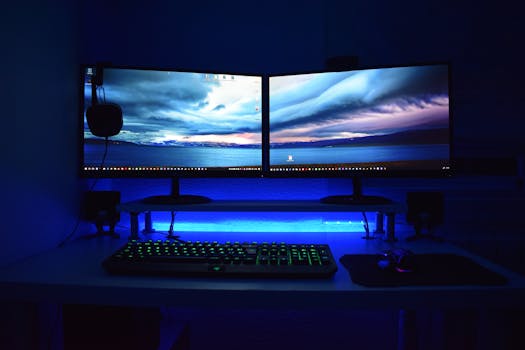Introduction
As technology continues to evolve, the demand for innovative display solutions is at an all-time high. Flexible and transparent display technologies are emerging as key players in the next generation of electronic devices. These advancements promise to revolutionize how we interact with screens, offering new possibilities for design, functionality, and user experience. This article explores the development of these technologies, their applications, and the challenges that lie ahead.
The Rise of Flexible Displays
Flexible displays are made from materials that can bend, fold, and stretch without losing functionality. This flexibility opens up a world of possibilities for device design, allowing for more compact and portable electronics. Key materials used in flexible displays include organic light-emitting diodes (OLEDs) and electronic ink (E-ink).
Applications of Flexible Displays
Flexible displays are not just a novelty; they have practical applications across various industries:
- Smartphones and Tablets: Companies like Samsung and LG have already introduced flexible OLED screens in their flagship devices, allowing for curved designs that enhance user experience.
- Wearable Technology: Flexible displays are ideal for smartwatches and fitness trackers, providing a lightweight and comfortable interface.
- Automotive Displays: The automotive industry is exploring flexible displays for dashboards and infotainment systems, enabling seamless integration into vehicle designs.
- Advertising: Retailers are using flexible displays for dynamic signage that can be shaped to fit various spaces, attracting more customers.
Transparent Display Technologies
Transparent displays allow users to see through the screen while still displaying information. This technology is particularly exciting for applications where visibility is crucial, such as augmented reality (AR) and heads-up displays (HUDs).
Innovative Use Cases for Transparent Displays
Transparent displays are finding their way into various sectors:
- Augmented Reality: Companies like Microsoft with their HoloLens are leveraging transparent displays to overlay digital information onto the real world.
- Retail: Transparent screens can be used in storefronts to display advertisements while allowing customers to see the products behind the screen.
- Smart Home Devices: Transparent displays can be integrated into windows or mirrors, providing information without obstructing the view.
Challenges in Development
Despite the exciting potential of flexible and transparent displays, several challenges must be addressed:
- Durability: Flexible displays must withstand bending and folding without damage, which requires advanced materials and engineering.
- Manufacturing Costs: The production of these displays can be expensive, limiting their widespread adoption.
- Brightness and Clarity: Transparent displays must maintain high visibility and color accuracy, which can be difficult to achieve.
Case Studies: Leading the Charge
Several companies are at the forefront of developing flexible and transparent display technologies:
- Samsung: With its Galaxy Fold series, Samsung has demonstrated the potential of flexible displays in smartphones, pushing the boundaries of design and functionality.
- LG Display: LG has developed transparent OLED displays that have been showcased in various applications, including retail and automotive sectors.
- Apple: Rumors suggest that Apple is exploring flexible display technology for future iPhones, indicating a strong interest in this area.
The Future of Display Technologies
The future of flexible and transparent display technologies looks promising. As research and development continue, we can expect to see:
- Increased Adoption: As costs decrease and technology improves, more industries will adopt these displays.
- Enhanced User Experience: Flexible and transparent displays will enable new ways for users to interact with devices, making technology more intuitive.
- Sustainability: Advances in materials science may lead to more eco-friendly production methods, aligning with global sustainability goals.
Conclusion
In conclusion, the development of flexible and transparent display technologies is set to transform the landscape of electronic devices. With applications ranging from smartphones to augmented reality, these innovations promise to enhance user experience and open new avenues for design. While challenges remain, the ongoing research and investment in this field indicate a bright future. As we move forward, the integration of these technologies will not only redefine how we interact with screens but also how we perceive the digital world around us.
